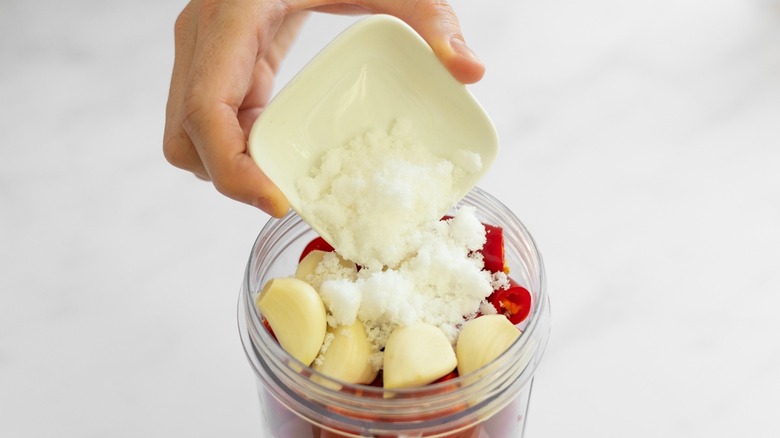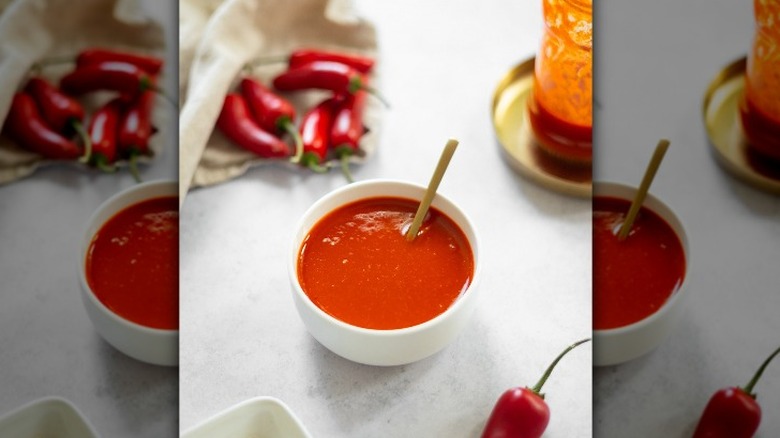The Most Important Step For Homemade Sriracha Is Worth The Wait
Good things come to those who wait, especially when it comes to fermented foods. Fermentation adds a pop of acidity and flavor to some of our favorite foods, like yogurt, pickles, and even hot sauce, but it takes patience and a little hands-off waiting time to pay off. Tasting Table recipe developer Tanika Douglas shared her sriracha recipe, and you might be surprised how easy this popular condiment is to make at home.
With just a few simple ingredients — plus the most important step, time — you can have a batch of tangy homemade sriracha to use for yourself or give as a very thoughtful gift to your spice-loving friends. "The fermentation process is incredibly important in the flavor development of the sauce, as it adds a tang and more complexity," Douglas says.
Sriracha is a garlic and chili-based sauce, balanced with salt, sugar, and acidity. With roots in Southeast Asia, the most popular brand has faced shortages, making this recipe a bonus for those of us who can't face a plate of eggs or bowl of pho without a dash of heat.
Fermentation is slow magic
Sriracha starts with a simple puree of red jalapeño peppers, salt, sugar, and water. The puree is set aside in a jar, loosely covered to allow the naturally occurring lactic acid bacteria from the peppers to act. Douglas says this typically takes three days, and she recommends stirring the pepper mixture once a day to check for bubbles that indicate fermentation is happening. The wait is worth it for the amazing flavor in the end. Every batch is a little different, so "if your sriracha isn't quite bubbling by day three, don't give up hope," says Douglas, just give it another day or two.
Once that long wait is over, the fermented peppers are mixed with vinegar to further flavor the sauce and strained, and then finally it's ready to enjoy. Your homemade sriracha can be stored in the refrigerator for up to three months, so a little advance planning when you run low will avoid the sad prospect of being without when you make your next batch.

